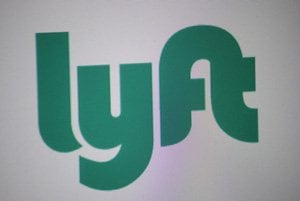We're still waiting for an official Lyft IPO date, but we did just hear some interesting news before the transportation company goes public: Lyft is ramping up its autonomous vehicle division.
Online learning portal Udacity has teamed with Lyft to launch an introductory self-driving car engineering course. According to AJC.com, the course is called "Introduction to Self-Driving Cars."

Lyft will provide 400 scholarships for the four-month course that teaches students about robotics and machine learning. According to Engadget, the scholarships are targeting students in U.S. "communities that are underrepresented in technology."
While the idea of self-driving cars may seem futuristic, there's a big reason why Lyft is investing in autonomous technology...
Lyft Is Competing with Uber in the Self-Driving Car Space
Before the Lyft IPO, investors want to know how the company plans to compete with Uber, especially with self-driving cars.
In February 2015, Uber opened a robotic research facility for autonomous vehicles in Pittsburgh. The financial terms weren't disclosed, but Uber did raise $1.2 billion in December 2014.
Just a year after the robotic facility opened, self-driving Uber cars picked up passengers in Pittsburgh in September 2016. Engineers were in the front two seats for safety and could control the wheel and brakes if needed, according to a TechCrunch reporter who was in one of the cars.
Energy Breakthrough: One gallon of this new "crystal fuel" could get you from New York to L.A. and back... seven times! Read more...
And while the cars still had human controllers as a safety measure, it's a huge advancement for Uber that puts it ahead of Lyft in the self-driving car race.
It wasn't until September 2017 that autonomous Lyft vehicles accompanied by a human behind the wheel picked up passengers in San Francisco.
Get In on the Drone Craze Now, Before Sales Quadruple
Now, we did note in an Oct. 4 report that Alphabet Inc. (Nasdaq: GOOGL) is considering making a $1 billion investment in Lyft. That money could be used to help Lyft increase its research and get a self-driving fleet on the road faster.
If Lyft does get the investment from Google, does this mean you should buy Lyft stock?
Here's what you need to know about investing in Lyft stock, plus a bonus profit play you need to know about today...
Read This Now Before You Buy Lyft Stock
[mmpazkzone name="in-story" network="9794" site="307044" id="137008" type="4"]
Money Morning Director of Technology & Venture Capital Research Michael Robinson doesn't believe retail investors should invest in overhyped IPOs.
"I generally tell retail investors to avoid buying an IPO at the open because the insiders have already made all the money available at the debut," Robinson said.
You see, prices can soar for a few days after a company goes public, which nets early investors the biggest gains. However, retail investors are often buying in at an inflated price, and stock prices after a public offering can be extremely volatile.
But he has one exception...
"My exception to this rule is to put in a limit order that is fairly tight from the offering price. Otherwise, the risk is you buy at the top and then go upside down. That's a big risk to carry with a new issue that hasn't hit the lock-up date," Robinson said.
However, we have one strategy that lets you safely profit from the hype these IPOs create without the risk that can come with buying at the IPO price.
Robinson advises investors to purchase an exchange-traded fund (ETF) that mimics the broader market for IPOs. It's the First Trust U.S. Equity Opportunities ETF Fund (NYSE: FPX).
Because FPX is an ETF, retail investors can buy and sell it just like a stock.
And because FPX holds a mix of recent IPOs, it's diversified. That makes it less risky than owning just one stock.
Because FPX owns more of PayPal Holdings Inc. (Nasdaq: PYPL) (6.96% of its holdings) than SNAP (1.05% of its holdings), for example, it balances out the risk of IPOs. If FPX just owned shares of SNAP, FPX would be down 39.56% so far in 2017. But PYPL stock price is up 67.46% so far in 2017, and it accounts for a much larger position than Snapchat.
According to FTPPortfolios.com, FPX's holdings include the 100 largest and most recent U.S. public offerings.
It currently holds IPOs that rolled out over the last several years, including Snap Inc. (NYSE: SNAP), Match Group Inc. (Nasdaq: MTCH), and Blue Buffalo Pet Products Inc. (Nasdaq: BUFF). And it also holds newly spun-off companies like AbbVie Inc. (NYSE: ABBV).
This structure lets you profit from IPOs and new public companies without the risk of owning just one stock. And for investors looking to outperform the market with safe investments, FPX is beating the Dow right now.
This year, FPX has climbed 19.64%. In comparison, the Dow is up only 15.36% in the same time.
Up Next: One gallon of this new "crystal fuel" could get you from New York to L.A. and back... seven times! Being hailed by many experts as energy's "Holy Grail," it's 1,693 times more powerful than the gasoline that runs your car. The mainstream investment media isn't even talking about it yet. Read more...


